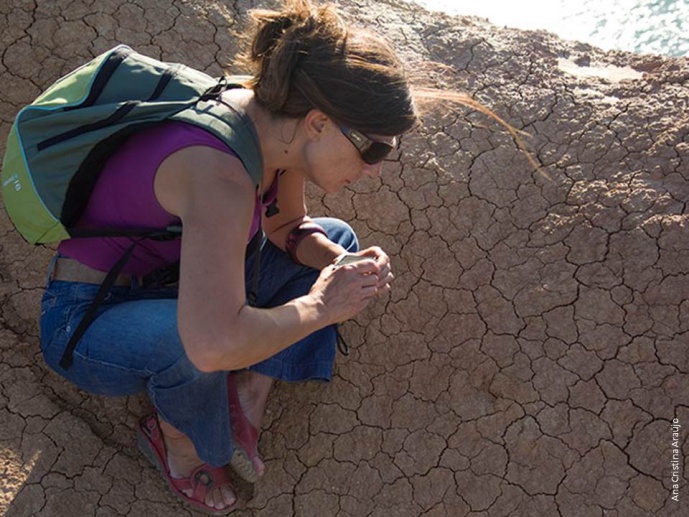Ana Cristina Reis Silva Araújo
Auxiliary Researcher
ACADEMIC DEGREE
PHD, Université de Paris 1 (Panthéon, Sorbonne) in Prehistory / Ethnology / Anthropology
Thesis Title: Une histoire des premières communautés mésolithiques au Portugal
Grade : Très honorable avec félicitations du jury (maximum score)
SCIENTIFIC INTERESTS
Archaeology/ Culture and Nature at the Pleistocene – Holocene boundary / Palaeolithic and Mesolithic Archaeology /Lithic raw materials / Lithic technology/ SW Europe / Iberia / Portugal
OTHER SKILLS/ ACTIVITIES
1. Editing monographs (archaeological research)
2. Organization of scientific meetings
3. Design, organization and production of exhibition modules
4. Field work: evaluation, survey and excavation of archaeological sites.
5. Guidance and institutional support for students and national / foreign researchers
6. Management of Archaeological Heritage.
OMAIN OF SPECIALIZATION
Mesolithic Archaeology; Lithic Technology
Mesolithic Archaeology deals with the latest hunter-gatherer societies that practised a way of life based on the exploitation and consumption of wild resources, both animals and plants. In Portugal the Mesolithic begins roughly around 11.3 cal. kyrs BP – succeeding the Upper Palaeolithic cultures from the Pleistocene – and ends circa 7.0 cal kyrs BP, preceding the first agro-pastoral economies. During this time-span people preserved much of the previous Palaeolithic skills – both technological and social – but also created new forms of survival in a constantly changing environment. In Portugal, this was the time where marine resources, mostly molluscs, became crucial to human subsistence, giving rise to the formation of shellmidden sites. Isotopic signatures of human skeletons from this period show that the consumption of marine resources could attain 60%.
Lithic Technology, the study of stone tools, reconstructs past human behaviours in their technical, economic and social dimensions. In the course of millennia, stone tools were the primary means for obtaining and processing food, shelter and a number of other domestic needs. Conceived as a part of the whole cultural system, lithic variability must be studied in conjunction with other variables: 1. subsistence, settlement, and mobility; 2. environment, climate and seasonality of resources. Guided by the chaîne opératoire approach - a reconstitution of the process of production (from raw material acquisition and selection to the gestures that determined the desired end-products) - the study of stone tools includes diverse analytical procedures and other research avenues such as spatial archaeology; experimental archaeology, and use-wear analyses. These are dependent upon broader aspects concerning the organization and functioning of past human societies.
PRESENT RESEARCH INTERESTS
1. Human-environment relationships during the Pleistocene / Holocene transition
2. Diachronic vs. synchronic variability of early and mid-Holocene lithic technologies;
3. Between the ocean and the hinterland of the Estremadura: past pathways of early Mesolithic groups;
4.Behavioural patterns of late Mesolithic societies: nature and culture on the move
